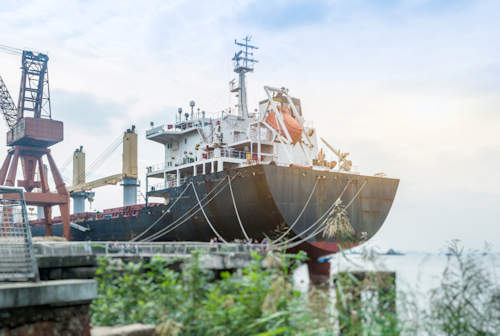The Process of Propeller Installation
The process of installing a new propeller on a commercial ship is not as straightforward as bolting on a new component. It’s a meticulous operation that involves several key steps:
- Hauling the Ship: The first step is of course getting the ship out of water. This usually involves hauling the vessel out using a dry dock or a ship lift. This process alone requires significant planning and cost, due to the use of specialized infrastructure and equipment.
- Removal of the Old Propeller: Next comes the removal of the old propeller. This involves detaching it from the propeller shaft, which can be a laborious task depending on the size and condition of the propeller.
- Inspection and Cleaning: After removal, the propeller shaft and the hull area surrounding it must be thoroughly inspected for signs of damage or wear. If necessary, repairs should be made before proceeding with the installation.
- Installation of the New Propeller: The new propeller is then mounted onto the propeller shaft. This must be done with great care to ensure it’s properly aligned and secured.
- Post-Installation Checks: After the propeller is installed, several checks are carried out to ensure everything is in order. These include alignment checks, vibration checks, and potentially even a short sea trial.
The Costs Involved
The cost of installing a new propeller can vary greatly depending on a host of factors:
- Propeller Cost: This is generally the most significant expense. Depending on the size, material, and specific design, a propeller can cost anywhere from ten thousand to several hundred thousand dollars.
- Haul-Out and Docking Fees: These fees can be substantial, particularly for large commercial vessels. It’s not uncommon for this to run into tens of thousands of dollars.
- Labor Costs: Skilled labor is required for the removal of the old propeller, installation of the new one, and post-installation checks. These labor costs can add up quickly.
- Incidental Costs: These can include anything from costs related to transporting the propeller to and from the vessel, to costs associated with any repairs or adjustments needed on the propeller shaft or surrounding area.
Navigating the Costs
While the cost of installing a new propeller can be steep, it’s an investment in the ship’s operational efficiency and longevity. A well-chosen and correctly installed propeller can result in substantial fuel savings over time, improved maneuverability, and reduced wear and tear on the ship’s engine and drive systems.
As mariners, the sea teaches us the value of making wise choices. When it comes to propellers, the lesson holds true. The upfront cost may seem high, but skimping on quality or proper installation can lead to even higher costs down the line. The heartbeat of a vessel is too important to leave to chance.
